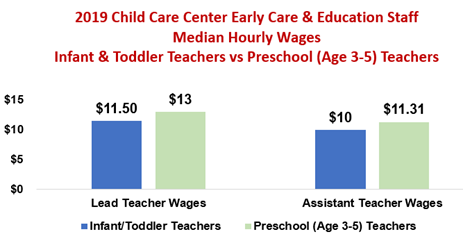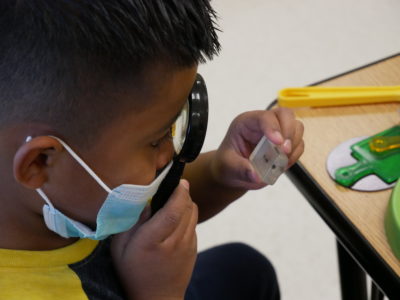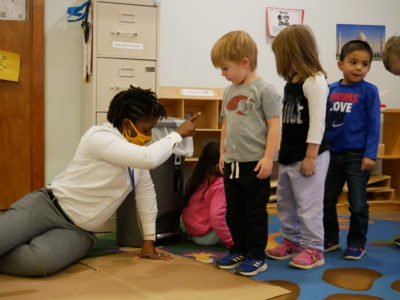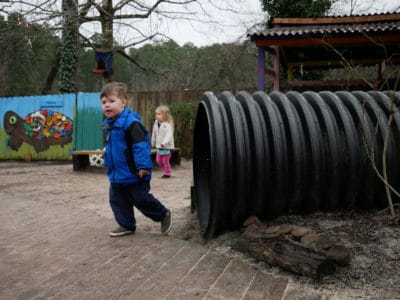

Recently, the American Rescue Plan was approved by Congress and signed into law. It is the sixth COVID-19 relief bill passed by Congress in the past year. The new law provides assistance for families, employers, communities and states as the nation and our state embark on the journey to economic recovery.
For families with children, the current public health pandemic has had a brutal economic impact. The most recent Census Bureau Household Pulse Survey, undertaken between February 17, 2021, and March 1, 2021, continues to show an array of tough challenges faced by families. For example, nearly 50% of families with children (49.4%) have had a decline in income since March 2020 compared to 38.9% of households without children. About 229,392 parents in North Carolina report not working because they are home caring for children not in school or child care. And, 42% of families with children in North Carolina reported difficulty paying bills in the last seven days.
This week’s announcement that the unemployment rate in North Carolina for January declined to 5.9% is certainly welcome news. However, it’s still far above the 3.5% unemployment rate from January 2020. What we know is that parents with children need child care to work or return to work. This is why child care is a key ingredient to economic recovery. Parents know it. Employers know it. Congress knows it. That’s why Congress approved $39 billion for child care within the American Rescue Plan. This new money is for a broad array of purposes.
- $14.9 billion increase for child care assistance. This money is largely to help families afford child care. North Carolina’s share is estimated to be about $503.7 million.
- $23.9 billion increase for child care stabilization. This money is largely to stabilize the child care market. North Carolina’s share is estimated to be about $805.7 million. Child care, like other small businesses, has struggled to remain economically viable throughout the past year. Child care programs continue to struggle due to low child enrollment (where parent fees represent the operating budget for child care programs) compared to a year ago and higher costs to operate within health and safety protocols designed to reduce the spread of COVID-19.
Congress clearly understood that the largest cost to operate any child care program is related to funding to pay staff. Congress understood both of these facts:
- The child care workforce supports all other workforces, but the average pay is low. Studies by Child Care Services Association have repeatedly documented the low pay of the workforce over the past 20+ years. The most recent study released in the fall of 2020 found that lead teachers in a preschool-age classroom earn about $13 per hour and lead teachers in an infant classroom earn about $11.50 per hour. Assistant teachers earn less. Assistant teachers in a preschool-age classroom earn about $11.31 per hour and assistant teachers in an infant classroom earn about $10 per hour.
- Staffing challenges related to COVID-19 remain an ongoing cost and struggle for child care programs. More staff are often needed to comply with new COVID-19 related health and safety protocols, yet turnover was high before the pandemic, exacerbating child care staffing challenges. A year ago, we released the results of a survey of those who had left the child care field. Low pay was the top reason identified by former child care workers as to why they stopped working in child care.


It’s time to recognize the important work the child care workforce does. Child care is not only a work support for parents. It is also an early learning setting for children. Research shows that a child’s earliest years are when the brain is developing the fastest, forming a foundation for all future learning. And yet, the pay that the child care workforce receives fails to measure up to the importance of their work. Economic recovery will depend on the child care workforce because child care programs can’t operate without staff. And, our future workforce, today’s children in child care, also rely on that workforce for the brain building that occurs during their earliest years and sets them up for later K-12 school success.
Therefore, it is no surprise that the very first use of the stabilization funds as directed by Congress addresses the pay of the child care workforce. The full list of uses for these funds is below.
- Personnel costs, including payroll and salaries or similar compensation for an employee (including any sole proprietor or independent contractor), employee benefits, premium pay or costs for employee recruitment and retention
- Rent (including rent under a lease agreement) or payment on any mortgage obligation, utilities, facility maintenance or improvements or insurance
- Personal protective equipment, cleaning and sanitization supplies and services or training and professional development related to health and safety practices
- Purchases of or updates to equipment and supplies to respond to the COVID-19 public health emergency
- Goods and services necessary to maintain or resume child care services
- Mental health supports for children and employees
Congress has spoken — with rules and funding. Now it’s up to each state to figure out the next steps as to how the new funding will be used best. Because the child care workforce is on the front-lines, heroes really, I am hopeful that individuals working in child care could receive some type of temporary pandemic pay increase out of this new funding. Throughout the pandemic, they have worked day in and day out to support the healthy development of the children in their care and support the needs of families.
Under federal policy, child care workforce pay can be addressed with the new child care funds that North Carolina will receive. Our early educators have been onsite. They have stepped up. They have soldiered on during the pandemic to undertake the important work they do despite potential health risks to themselves during the pandemic. With the new funds from Congress, this is doable. Let’s do it.
Editor’s note: This perspective was originally published by the Child Care Services Association. It has been posted with the author’s permission.




